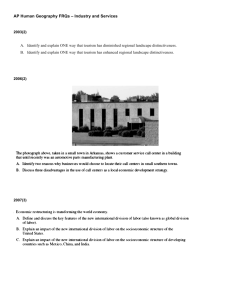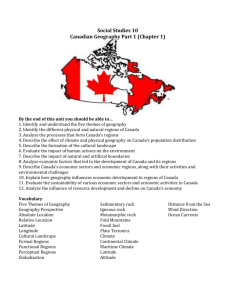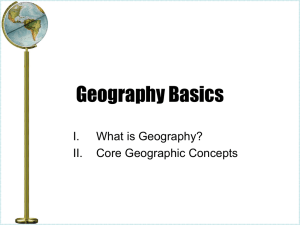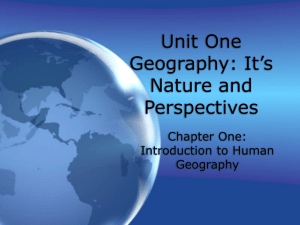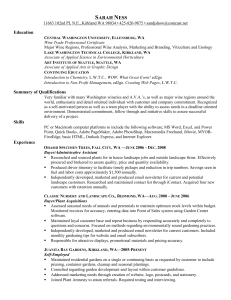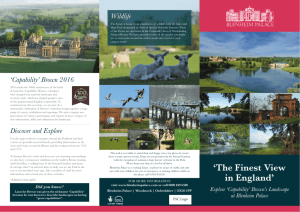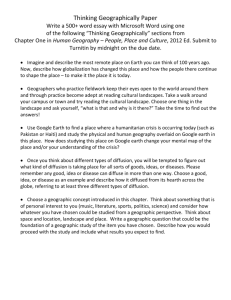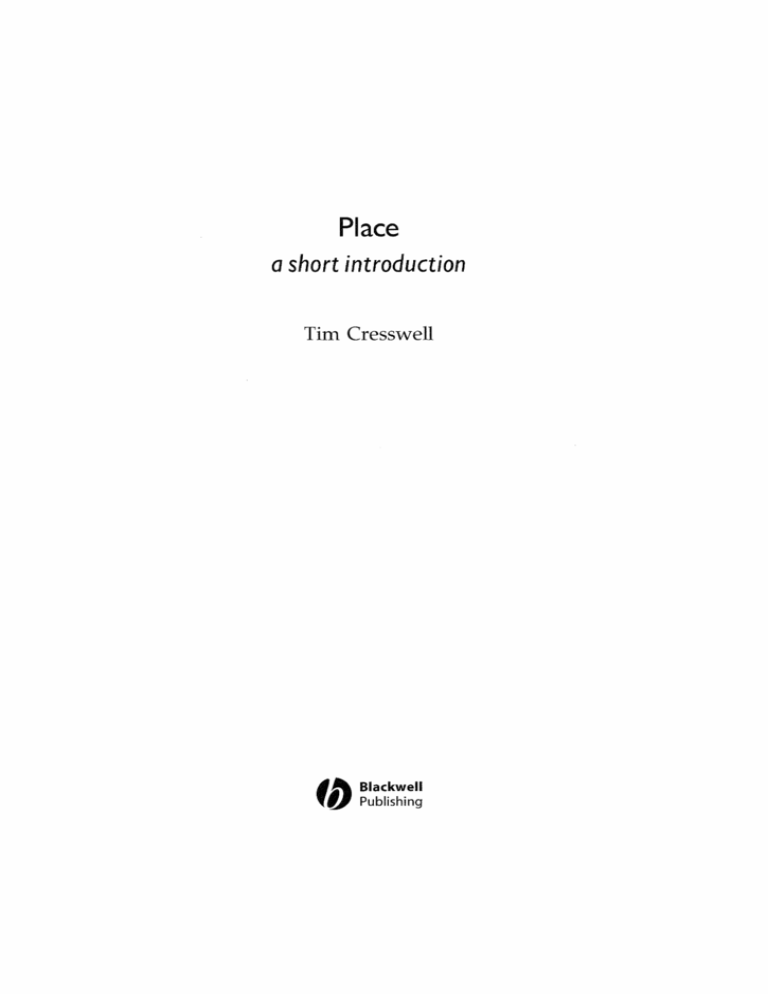
Place
a short introduction
Tim Cresswell
~IJ
~l
Blackwell
Publishing
© 2004 by Tim Cresswell
350 Main Street, Malden, MA 02148-5020, USA
108 Cowley Road, Oxford OX4 1JF, UK
550 Swanston Street, Carlton, Victoria 3053, Australia
The right of Tim Cresswell to be identified as the Author of this Work has been asserted in
accordance with the UK Copyright, Designs, and Patents Act 1988.
All rights reserved. No part of this publication may be reproduced, stored in a retrieval
system, or transmitted, in any form or by any means, electronic, mechanical, photocopying,
recording or otherwise, except as permitted by the UK Copyright, Designs, and Patents Act
1988, without the prior permission of the publisher.
First published 2004 by Blackwell Publishing Ltd
Library of Congress Cataloging-in-Publication Data
Cresswell, Tim.
Place : a short introduction / Tim Cresswell.
p. cm. - (Short introductions to geography)
Includes bibliographical references and index.
ISBN 1-4051-0671-9 (alk. paper) - ISBN 1-4051-0672-7 (alk. paper)
1. Human geography. 2. Geographical perception. 1. Title. II. Series.
GF50.C742005
304.2'3-dc22
A catalogue record for this title is available from the British Library.
Set in 10.5/12pt Palatino
by MHL Production Services, Coventry, United Kingdom
Printed and bound in the United Kingdom
by MPG Books Limited, Bodmin, Cornwall
For further information on
Blackwell Publishing, visit our website:
http://www.blackwellpublishing.com
2003021515
I
Defining Place
Human geography is the study of places. It is, of course, many other
things but it is, on an intuitive level, a discipline which has place as
one of its principle objects of study. Students signing up for
geography degrees and courses will often site their interest in different places around the world. Despite this general enthusiasm for
the study of places there is very little considered understanding of
what the word'place' means. This is as true in theory and philosophy
as it is among the new students signing up for university geography
courses. Place is a word that seems to speak for itself.
The popularity of place is an opportunity for geography. It is also a
problem as no-one quite knows what they are talking about when
they are talking about place. Place is not a specialized piece of academic terminology. It is a word we use daily in the English-speaking
world. It is a word wrapped in common sense. In one sense this
makes it easier to grasp as it is familiar. In another sense, however, this
makes it more slippery as the subject of a book. As we already think
we know what it means it is hard to get beyond that common-sense
level in order to understand it in a more developed way. Place, then,
is both Simple (and that is part of its appeal) and complicated. It is the
purpose of this book to scrutinise the concept of place and its
centrality to both geography and everyday life.
Think of the ways place is used in everyday speech. 'Would you
like to come round to my place?' This suggests ownership or some
kind of connection between a person and a particular location or
building. It also suggests a notion of privacy and belonging. 'My
place' is not 'your place' - you and I have different places. 'Brisbane is
a nice place.' Here 'place' is referring to a city in a common sense kind
of way and the fact that it is nice suggests something of the way it
2
3
DEFINING PLACE
DEFINING PLACE
looks and what it is like to be there. 'She put me in my place' refers to
more of a sense of position in a social hierarchy. 'A place for
everything and everything in its place' is another well-known phrase
that suggests that there are particular orderings of things in the world
that have a socio-geographical basis. Place is everywhere. This makes
it different from other terms in geography like 'territory', which
announces itself as a specialized term, or 'landscape' which is not a
word that permeates through our everyday encounters. So what is
this 'place'?
Cast your mind back to the first time you moved into a particular
space - a room in college accommodation is a good example. You are
confronted with a particular area of floor space and a certain volume
of air. In that room there may be a few rudimentary pieces of furniture
such as a bed, a desk, a set of drawers and a cupboard. These are
common to all the rooms in the complex. They are not unique and
mean nothing to you beyond the provision of certain necessities of
student life. Even these bare essentials have a history. A close
inspection may reveal that a former owner has inscribed her name on
the desk in an idle moment between classes. There on the carpet you
notice a stain where someone has spilt some coffee. Some of the paint
on the wall is missing. Perhaps someone had used putty to put up a
poster. These are the hauntings of past inhabitation. This anonymous
space has a history - it meant something to other people. Now what
do you do? A common strategy is to make the space say something
about you. You add your own possessions, rearrange the furniture
within the limits of the space, put your own posters on the wall,
arrange a few books purposefully on the desk. Thus space is turned
into place. Your place.
40.46Q N 73.58 QW does not mean that much to most people. Some
people with a sound knowledge of the globe may be able to tell you
what this signifies but to most of us these are just numbers indicating a
location - a site without meaning. These co-ordinates mark the location
of New York City - somewhere south of Central Park in Manhattan.
Immediately many images come into our heads. New York or
Manhattan are place names rich with meaning. We might think of
skyscrapers, of 9/11, of shopping or of any number of movie locations.
Replacing a set of numbers with a name means that we begin to
approach 'place'. If we heard that two planes had flown into 40.46QN
73.58QW it would not have quite the same impact as hearing that they
had flown into New York, into Manhattan, into the Twin Towers.
Cruise missiles are programmed with locations and spatial referents. If
they could be programmed with 'place' instead, with all the
understanding that implies, they might decide to ditch in the desert.
Towards the southern tip of Manhattan and to the east of center is
an area - a place - known as the Lower East Side. This is an area
which has been known as a place of successive immigrant groups Irish, Jewish, German, Italian, Eastern European, Haitian, Puerto
Rican, Chinese. It is a little to the north of the infamous Five CorneJ;s the setting for the film The Gangs of New York (2002). It is a place of
closely-knit tenement blocks south of Houston Street - buildings once
crammed with large families in small rooms. A succession of moral
panics over immigration have focused on this place. It has also been a
place of political uprisings and police riots. In the middle of this place
is Tompkins Square Park - a little piece of nature in the city built to
provide a place of calm in the hurly burly of metropolitan life. It was
built in the 1830s and named after the US Vice-President Daniel
Tompkins. Later the park became a place of demonstrations by unions
and anarchists as well as a place for children and the preaching of
temperance. By the 1960s it was the epicenter of a Lower East Side
dominated by bohemian counter-cultures, squatters and artists and by
the 1980s it was newly respectable - a place where the new cultural
elite could savor city life. Needless to say, property prices meant that
the buildings were now out of the reach of most people. Homeless
people began to sleep in the park. Some of the newly respectable
residents were scared by this and supported the removal of homeless
people by the police. Once again, in 1986, the park was the site of a
demonstration and riot. In the area around the park, from the 1960s
on, residents were busy building 84 community gardens in vacant
lots. In 1997 Mayor Giuliani transferred responsibility for the gardens
from the City Park's Department to the Housing, Preservation and
Development Department with the intention that they be sold off for
development. The first four gardens were auctioned in July 1997
together with a local community centre. In May 1999,114 community
gardens across New York were saved from development when they
were bought by Bette Midler's New York Restoration Fund and Trust
for Public Land for a combined total of $4.2 million. However the
policy of privatization has continued, and gardens continued to be
demolished.
If you visit the Lower East Side now you can dine in any number of
fancy and not-so-fancy restaurants, bars and cafes, you can shop in
boutiques and admire the brownstone architecture. You can stroll
through Tompkins Square Park and visit the remaining community
gardens. Crossing over Houston Street to the south you can visit the
Lower East Side Tenement Museum in one of the old buildings that
formally housed new immigrants. You could, in other words, see
many manifestations of 'place'. The museum is an attempt to produce
4
DEFINING PLACE
DEFINING PLACE
5
a 'place of memory' where the experiences of immigrants will not be
forgotten. The gardens are the result of the efforts of immigrants and
others to carve out a place from a little piece of Manhattan for their
community to enjoy nature. Some of the community gardens - often
the first to be leveled - are the sites of Casitas - little houses made by
the Puerto Rican community to replicate similar buildings from
'home'. They are draped with Puerto Rican flags and other symbols of
elsewhere. Old men sit out in the sun watching baseball. Community
meetings take place around these eight foot by ten foot buildings.
They are, as the urban historian Delores Hayden puts it:
a conscious choice by community organizers to construct the rurat
preindustrial bohio ... from the island as a new kind of community center
in devastated tenement districts such as Lower Harlem, the South Bronx,
and the Lower East Side ... Painted in coral, turquoise, or lemon yellow,
these dwellings recall the colors of the Caribbean and evoke a memory of
the homeland for immigrants who find themselves in Alphabet City or
Spanish Harlem.
(Hayden 1995, 35-6)
Figure 1.1 A flyer attached to a community garden fence in the Lower East Side on Manhattan calls
for the gardens to be saved from the City government. (Photo by author)
Figure 1.2 One ofthe gardens destroyed by the City Government in New York was Esperanza. People
invest a lot in the places they create and were understandably angry at the demolition. (Photo by author)
Other gardens, ones not planted by Puerto Rican immigrants, are
more bucolic, replicating some ideal of an English garden. Yet others
are wild nature reserves set aside for local school lessons on biology
and ecology. All of these are examples of the ongoing and diverse
creation of places - sites of history and identity in the city.
Meanwhile back in Tompkins Square Park there are still tensions
between the needs of the homeless to have even the smallest and
most insecure 'place-for the night' and the desires of some local
residents to have what they see as an attractive and safe place to live
and raise families - one that does not include the homeless. Again
places are being made, maintained and contested. New York and
Manhattan are places. The Lower East Side is a place. The Tenement
Museum, community gardens and Tompkins Square Park are all part
of the rich tapestry of place making that make up the area in and
around 40.46QN 73.58QW. We will return to the Lower East Side
throughout the book to illustrate the many facets of the use of 'place'
in geography.
Allover the world people are engaged in place-making activities.
Homeowners redecorate, build additions, manicure the lawn.
Neighborhood organizations put pressure on people to tidy their
yards; city governments legislate for new public buildings to express
the spirit of particular places. Nations project themselves to the rest of
the world through postage stamps, money, parliament buildings,
national stadia, tourist brochures, etc. Within nation-states oppressed
6
DEFINING PLACE
DEFINING PLACE
7
groups attempt to assert their own identities. Just as the new student
climbs on the bed to put the poster on the wall so the Kosovan Muslim
flies a new flag, erects a new monument and redraws the map. Graffiti
artists write their tags in flowing script on the walls of the city. This is
their place too.
So what links these examples: a child's room, an urban garden, a
market town, New York City, Kosovo and the Earth? What makes them
all places and not simply a room, a garden, a town, a world city, a new
nation and an inhabited planet? One answer is that they are all spaces
which people have made meaningful. They are all spaces people are
attached to in one way or another. This is the most straightforward and
common definition of place - a meaningful location.
The political geographer John Agnew (1987) has outlined three
fundamental aspects of place as a'meaningfullocation'.
1.
2.
3.
Figure 1.3 A bucolic scene in
(Photo by author)
0
Lower East Side community garden - a place for nature in the city?
Figure 1.4 A casita in a community garden. Note the Puerto Rican flag hanging in the porch and the
masks on the wall. Immigrant Puerto Rican groups in New York City place these in their community
gardens to recreate something of the place they came from - to make themselves 'feel at home'. (Photo
by author)
Location.
Locale.
Sense of place.
Perhaps the most obvious point is that all of the places mentioned above
are located. They have fixed objective co-ordinates on the Earth's
surface (or in the Earth's case a specific location vis-a.-vis other planets
and the sun). New York is 'here' and Kosovo is 'there'. Given the
appropriate scale we could find them on a map. The word place is often
used in everyday language to simply refer to location. When we use
place as a verb for instance (where should I place this?) we are usually
referring to some notion of location - the simple notion of 'where'. But
places are not always stationary. A ship, for instance, may become a
special kind of place for people who share it on a long voyage, even
though its location is constantly changing. By 'locale' Agnew means the
material setting for social relations - the actual shape of place within
which people conduct their lives as individuals, as men or women, as
white or black, straight or gay. It is clear that places almost always have a
concrete form. New York is a collection of buildings and roads and
public spaces including the community gardens which are themselves
material - made of plants and statues and little sheds and houses with
fences around them. The child's room has four walls, a window, a door,
and a closet. Places then, are material things. Even imaginary places, like
Hogwarts School in Harry Potter novels, have an imaginary materiality
of rooms, staircases and tunnels that make the novel work. As well as
being located and having a material visual form, places must have some
relationship to humans and the human capacity to produce and
consume meaning. By'sense of place' Agnew means the subjective and
emotional attachment people have to place. Novels and films (at least
8
DEFINING PLACE
DEFINING PLACE
successful ones) often evoke a sense of place - a feeling that we the
reader/viewer know what it is like to 'be there'. We often have a sense of
place about where we live, or where we lived when we were children.
This is what the author Lucy Lippard has called The Lure of the Local
(Lippard 1997). It is commonplace in Western societies in the twentyfirst Century to bemoan a loss of a sense of place as the forces of
globalization have eroded local cultures and produced homogenized
global spaces. We will return to this issue of 'placelessness' in Chapter 2.
Agnew's three-part definition of place certainly accounts for most
examples of place. In addition, however, it helps to think of place in
distinction to two other familiar concepts in human geography _
'space' and 'landscape' - both of which are occasionally substituted
with the word 'place'.
the travel writer Jonathan Raban tells of his trip by boat along that
shore. Alongside his travel narrative he tells of the voyage of the
explorer Captain Vancouver in his ship HMS Discovery in 1792.
Vancouver's task was to map the coast and name it as he went making it a place of empire. Naming is one of the ways space can be
given meaning and become place. Vancouver's journal reports the
seemingly nonsensical movements of natives in their canoes in the sea
around them. Rather then taking a direct line from point A to point B
the natives would take complicated routes that had no apparent logic.
To the native canoeists their movements made perfect sense as they
read the sea as a set of places associated with particular spirits and
particular dangers. While the colonialists looked at the sea and saw
blank space, the natives saw place.
Space and Place
An advertisement for a large furniture shop in my Sunday paper read
'Transforming space into place.' Such an advertisement cannot rely on
an in-depth understanding of the development of human geography
and yet it speaks to one of the central themes in the development of
the discipline. The ad suggests that we might want to take the rooms
we have recently bought or rented and make them mean something
to us by arranging furniture in them - making them comfortable
literally and experientially. Humanistic geographers are unlikely to
agree that the mere purchase of furniture is going to enact such a
transformation but they will recognize the intent.
Space is a more abstract concept than place. When we speak of
space we tend to think of outer-space or the spaces of geometry.
Spaces have areas and volumes. Places have space between them. YiFu Tuan has likened space to movement and place to pauses - stops
along the way.
What begins as undifferentiated space becomes place as we get to know it
better and endow it with value.... The ideas 'space' and 'place' require each
other for definition. From the security and stability of place we are aware of
the openness, freedom, and threat of space, and vice versa. Furthermore, if
we think of space as that which allows movement, then place is pause; each
pause in movement makes it possible for location to be transformed into
place.
(Tuan 1977, 6)
Consider the relationship between the sea and land along the coast
between Seattle and Vancouver. In his book Passage to Juneau (1999)
9
Two world-views were in collision; and the poverty of white accounts of
these canoe journeys reflect the colonialists' blindness to the native sea.
They didn't get it - couldn't grasp the fact that for Indians the water was a
place, and the great bulk of the land was undifferentiated space.
The whites had entered a looking-glass world, where their own most
basic terms were reversed. Their whole focus was directed toward the land:
its natural harbours, its timber, its likely spots for settlement and
agriculture. They travelled everywhere equipped with mental chainsaws
and at a glance could strip a hill of its covering forest ... and see there a
future of hedges, fields, houses, churches. They viewed the sea as a medium
of access to the all-important land.
Substitute 'sea' for 'land' and vice-versa, in that paragraph, and one is
very close to the world that emerges from Indian stories, where the forest is
the realm of danger, darkness, exile, solitude, and self-extinction, while the
sea and its beaches represent safety, light, home, society, and the
continuation of life.
(Raban 1999, 103)
Raban recounts the visit of the German geographer Aurel Krause
while working for the Breman Geographical Society in 1881. He was
astonished by what he saw as the local Tlingits' ignorance of their
place in the world, which to him was dominated by the enormous
mountains that towered behind the small strip of land they inhabited
beside the sea.
In spite of the fact that the Tlingit is constantly surrounded by nature, he is
only acquainted with it as it offers him the necessities of life. He knows
every bay that lends itself to fishing or the beaching of a canoe ... and for
these he has names; but the mountain peaks themselves, even though they
are outstanding on account of their shape and size, are scarcely noticed by
him.
(Raban 1999, 106)
10
DEFINING PLACE
DEFINING PLACE
The Tlingits had many names for the sea but the land remained unnamed
and seemingly invisible. To the explorers the sea was empty space and
the land full of potential places waiting to be mapped and named but this
was the mirror image of the Tlinget 'sense of place'.
Space, then, has been seen in distinction to place as a realm without
meaning - as a 'fact of life' which, like time, produces the basic coordinates for human life. When humans invest meaning in a portion
of space and then become attached to it in some way (naming is one
such way) it becomes a place. Although this basic dualism of space
and place runs through much of human geography since the 1970s it
is confused somewhat by the idea of social space - or socially
produced space - which, in many ways, plays the same role as place
(Lefebvre 1991; Smith 1991).
the inhabitant a place where he works and has his friends. Far away, closing
his eyes, he had been seeing this valley, but as the visitor sees it, as the
guide book sees it.
(Williams 1960, 75)
II
Later in the novel Matthew gets back into the routine of the village 'It
was no longer a landscape or view, but a valley that people were
using.' No longer a view from a hill the valley was once again a place.
Landscape refers to the shape - the material topography - of a piece
of land. This may be apparently natural (though few, if any, parts of
the Earth's surface are untouched by humans) landscape or it might
be the obviously human, or cultural, landscape of a city. We do not
live in landscapes - we look at them.
Place as a Way of Understanding
Place and Landscape
Another concept that frequently appears alongside place in
geography texts is landscape. The idea of landscape has a very
particular history which dates back to the emergence of mercantile
capitalism in Renaissance Venice and Flanders. Landscape painting
emerged with the rediscovery of the science of 'optics', new
techniques of navigation and the development of a new class of
traders. Landscape referred to a portion of the earth's surface that can
be viewed from one spot (see Cosgrove 1984; Jackson 1997). It
combined a focus on the material topography of a portion of land
(that which can be seen) with the notion of vision (the way it is seen).
Landscape is an intensely visual idea. In most definitions of landscape
the viewer is outside of it. This is the primary way in which it differs
from place. Places are very much things to be inside of. Again a
literary example illustrates this.
In Raymond Williams' (1960) novel Border Country Matthew Price
returns to the place of his childhood in the Welsh borders after
spending many years at University in England. He is surprised at
what he finds when he gets there. He has forgotten the qualities of life
that made it a 'place' and replaced it in his mind with a 'landscape'.
What follows is an examination of the gap between the idea of the
village as 'landscape' and the idea of the village as a lived and felt
'place.' As Matthew realizes he has become an outsider in his own
village he reflects on his change of perspective:
He realized as he watched what had happened in going away. The valley as
landscape had been taken, but its work forgotten. The visitor sees beauty,
An important theme of this book is that place is not just a thing in the
world but a way of understanding the world. While we hold commonsense ideas of what places are, these are often quite vague when
subjected to critical reflection. Most often the designation of place is
given to something quite small in scale, but not too small.
Neighborhoods, villages, towns and cities are easily referred to as
places and these are the kinds of places that most often appear in
writing on place. There is little writing on the corner of a favorite room
as place at one scale, or on the globe at another. Yet, as Tuan suggested,
there is something of place in all of these. So, as it turns out, places as
'things' are quite obscure and hard to grasp.
But place is also a way of seeing, knowing and understanding the
world. When we look at the world as a world of places we see
different things. We see attachments and connections between people
and place. We see worlds of meaning and experience. Sometimes this
way of seeing can seem to be an act of resistance against a
rationalization of the world, a way of seeing that has more space
than place. To think of an area of the world as a rich and complicated
interplay of people and the environment - as a place - is to free us
from thinking of it as facts and figures. To think of Baghdad as a place
is in a different world to thinking of it as a location on which to drop
bombs. At other times, however seeing the world through the lens of
place leads to reactionary and exclusionary xenophobia, racism and
bigotry. 'Our place' is threatened and others have to be excluded.
Here 'place' is not so much a quality of things in the world but an
aspect of the way we choose to think about it - what we decide to
emphasize and what we decide to designate as unimportant. This
14
DEFINING PLACE
concern the connections between place, identity and power they use
place in radically different ways and from different political
perspectives.
Finally in Chapter 5 I provide an annotated bibliography and lists
of key readings and texts, a survey of web resources, pedagogical
resources and possible student projects.


